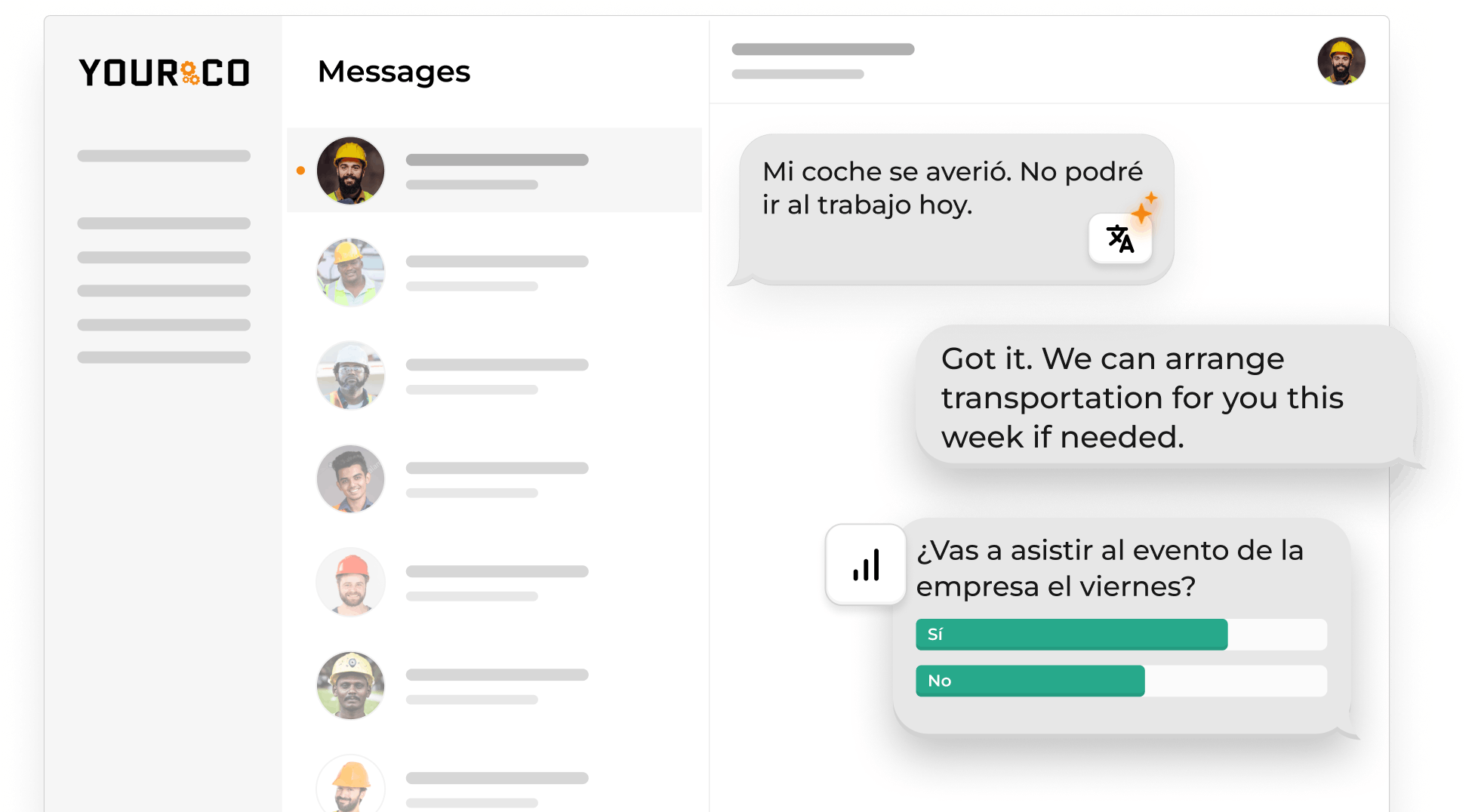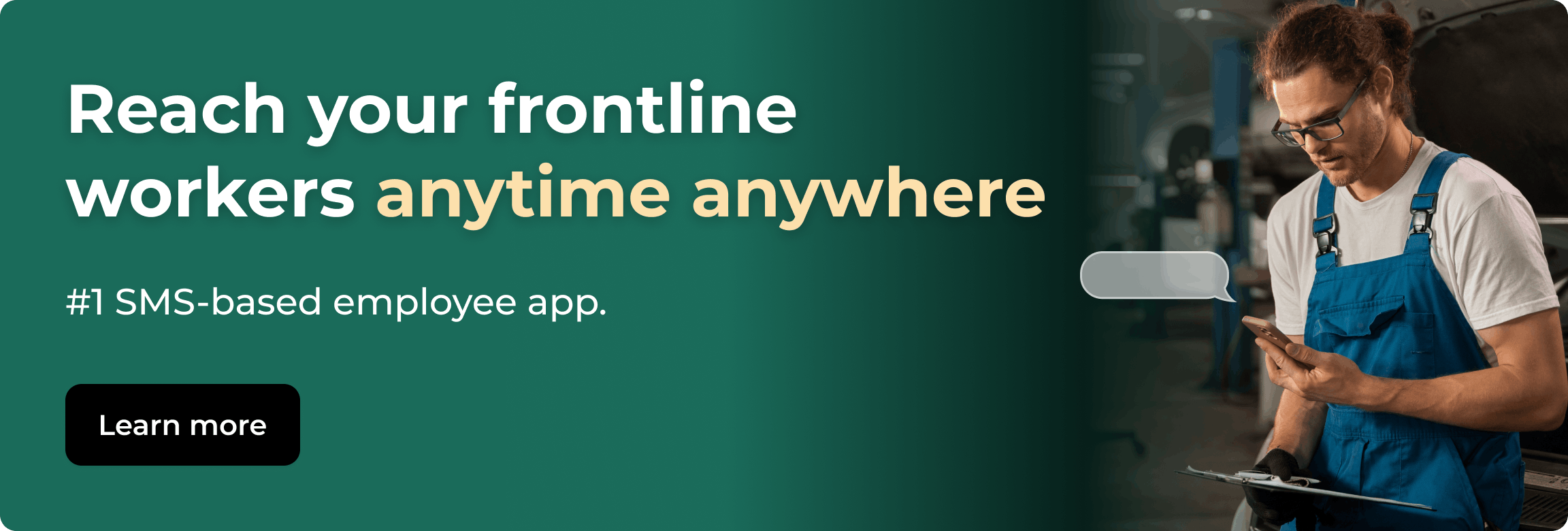How to Boost Employee Morale By Crafting Positive Messages


When done right, positive messaging can do more than boost morale. It can transform an entire workplace culture. According to Market Inspector, organizations with effective employee communication are 3.5 times more likely to outperform their competitors.
When employees receive positive messages, this impact amplifies dramatically. Recognized employees are 5 times more likely to feel valued and motivated than their unacknowledged colleagues.
This goes far beyond a quick “good job.” Inspiring messages are timely, specific, and authentic. They acknowledge effort, highlight impact, and contribute to a culture of trust and psychological safety. In this article, we’ll explore how to craft meaningful, morale-boosting messages that lift spirits and drive performance.
Why Meeting Employee Communication Needs and Expectations with Positive Messages is Important
Your workforce contains diverse communication preferences that significantly impact how messages resonate:
- Baby Boomers often prefer formal, detailed communication
- Gen X values efficiency
- Millennials, now the largest workforce segment, gravitate toward digital platforms
- Gen Z responds best to visual, concise content
These preferences extend beyond age to include job roles, cultural backgrounds, and personality traits. For example, employee engagement in manufacturing requires different approaches due to specific industry challenges. Manufacturing employees often perform repetitive tasks under demanding conditions, which can lead to decreased motivation over time. Positive, timely messages recognizing their attention to detail, consistency in meeting safety standards, or their contributions to reaching production targets can significantly enhance morale and motivation. Regularly acknowledging these achievements helps manufacturing employees feel valued, improving their overall engagement and job satisfaction.
Moreover, frontline workers and non-desk workers require different approaches than office staff, and individual communication styles vary widely.
Core Elements of a Positive Message to Employees
Messages that truly resonate require thoughtful content and delivery. Overall, the most effective positive messages to employees include three main components:
- Specific behavior or achievement being recognized
- Impact of that contribution on team, customers, or organization
- Expression of authentic appreciation
Specificity
Recognizing a specific behavior transforms generic praise into meaningful recognition. Replace "Good job on that project" with "Your creative solution to the inventory tracking problem saved us 15 hours of manual work each week while improving accuracy."
Authenticity
People can detect insincere praise immediately, and hollow compliments rarely boost morale. Messages must convey genuine appreciation to truly resonate. For instance, rather than a vague acknowledgment like "You're always great," try aligning your recognition with organizational values explicitly: "Your commitment to safety during yesterday’s incident perfectly demonstrates our value of looking out for one another. Your quick thinking prevented a serious issue and showed genuine care for your teammates." When appreciation clearly reflects the core values of the organization, employees understand that their effort
Clarity
Directness and conciseness also matter, especially in text formats. To communicate more effectively, encouraging phrases balance brevity with impact: "Your presentation made complex data accessible to everyone—exactly what we need for client meetings."
Tone and Timing in Positive Messages
Timing significantly influences message effectiveness. Regular, modest recognition proves more effective than occasional grand gestures. However, watch for message fatigue when recognition becomes formulaic.
Different scenarios require appropriate tones:
- Public accomplishments deserve public recognition
- Personal growth needs private acknowledgment
- Team achievements require collective appreciation
- Individual contributions within teams need both team and individual recognition
Multi-source recognition creates the greatest impact. When positive feedback comes from peers, managers, and executives, it produces comprehensive affirmation that resonates deeply. Implementing timely employee alerts via SMS can help ensure recognition is delivered promptly.
Types of Positive Messages to Employees and Their Uses
Various situations demand different types of positive communication. Understanding these categories helps select the appropriate approach for each circumstance.
Recognition and Appreciation Messages
Recognition messages highlight specific achievements or behaviors. They work best when they identify exactly what was done well and why it matters.
- For daily contributions: "Your attention to detail on the quarterly reports made our team presentation shine. Three department heads specifically mentioned how clear and actionable the data was."
- For project completion: "The website redesign you led finished on time and under budget while exceeding all user experience metrics. This directly contributes to our goal of improving customer engagement."
- For demonstrating company values: "When you stayed late to help the new team member understand our processes, you showed real commitment to teamwork and development. That kind of leadership strengthens our whole organization."
Peer-to-peer recognition programs also dramatically affect team dynamics. Employee appreciation from colleagues carries special weight: "Your commitment to quality makes everyone's job easier."
In addition to recognition messages, implementing creative incentive programs can motivate and engage employees, particularly in deskless environments.
Motivational and Inspirational Messages
Motivational messages differ from recognition by focusing on future performance rather than past achievements. They inspire during challenges and connect daily work to a larger purpose.
- For project kickoffs: "As we begin the system migration, remember that your expertise will directly improve how 5,000 customers experience our service every day. The challenges ahead are worth tackling because of the impact we'll make."
- During difficult periods: "The market challenges we're facing are significant, but I've seen this team overcome bigger obstacles. Your resilience and creativity are exactly what we need right now."
- During organizational change: "This transition asks us to learn new skills and adapt quickly. I'm confident in our ability to move through this change together because I've witnessed your adaptability on multiple occasions."
The most effective motivational messages balance optimism with realism. Acknowledging challenges while expressing confidence in the team's abilities creates stronger motivation than either blind optimism or harsh reality checks alone.
In addition, messages that tap into intrinsic motivation have lasting impact. Rather than focusing solely on external rewards, highlight how work connects to purpose, mastery, and autonomy, the three pillars of sustainable motivation.
Practical Applications: Implementing Positive Messages to Employees
Even perfectly crafted messages need appropriate delivery systems and integration into workplace routines to achieve maximum impact.
Delivery Methods for Positive Messages
Different delivery channels offer various advantages depending on the message, timing, and the employee's personality. Choosing the right delivery method shapes how the message is received and how meaningful it feels. That said, the most effective approach often blends multiple channels to reinforce appreciation and ensure it resonates. For example:
- Public recognition at team daily communications
- Personal text messages for immediate feedback
- Digital recognition platforms for visibility and documentation
- Physical notes or tokens for milestone achievements
Channel selection should consider recipient preferences, message urgency, and desired visibility. For example, SMS platforms excel with 98% open rates and 90-second average response times. This makes them ideal for reaching non-desk employees without regular access to computers or company email.
Integrating Positive Messages into Daily Routines
Successful organizations incorporate positive messages into daily operations—not as an afterthought, but as a consistent part of team culture. Effective integration strategies include:
- Starting team daily communications with recognition moments to set a positive tone
- Creating recognition prompts in project management tools to encourage real-time feedback
- Establishing weekly recognition routines, such as “Friday shout outs” or “Monday kudos”
- Training managers on effective recognition practices tailored to different personalities
Leaders can also model positive communication to normalize it across all levels. Measurement also helps refine these systems over time. Track engagement metrics, retention rates, and productivity indicators before and after implementation. Lastly, use employee surveys to gauge sentiment and identify improvement areas in your recognition approach.
Transforming Workplace Culture Through Positive Messages to Employees

Positive communication shapes workplace culture at its foundation. When done effectively, it creates self-reinforcing cycles of engagement, productivity, and retention.
Start with small, consistent steps rather than attempting a complete communication overhaul. Begin by identifying one recognition opportunity daily, then expand as the habit develops. Remember that authenticity outweighs perfection. A genuine, imperfect message delivers more impact than a polished but impersonal one.
Yourco provides an ideal solution for organizations struggling to connect with their non-desk workforce. Through our SMS-based employee app, companies can send immediate, direct positive messages to employees who traditionally miss out on appreciation opportunities. And with Yourco’s AI-powered translations supporting over 135 languages, you can ensure your messages resonate with every employee, no matter their preferred language.
Unlike traditional communication methods like email that go unread or complex mobile apps that create barriers, Yourco's platform reaches workers where they already are—on their phones with text messages they actually read. Our platform helps connect your frontline teams, ensuring everyone feels valued and connected to your company culture regardless of their location or role.
Try Yourco for free today or schedule a demo and see the difference the right workplace communication solution can make in your company.



